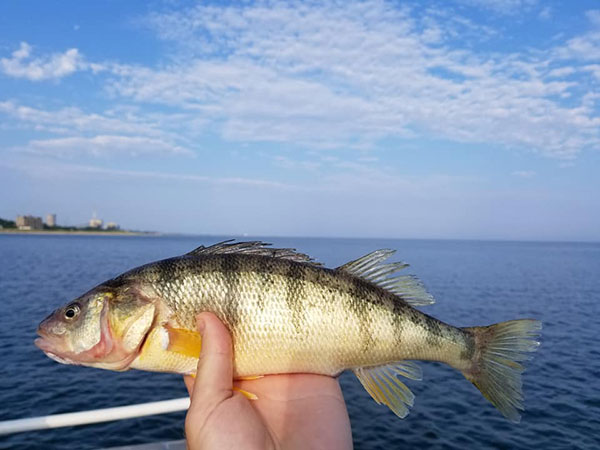- Details
By Louie Stout
If you’ve been to a tackle retailer and found it difficult to find what you need, you’re not alone.
Fishing tackle shortages are commonplace, whether it’s at your national discount store or the smaller local retailer.
It’s another aftereffect of the coronavirus. While tackle factory employees were quarantined at home, the public – furloughed from their jobs – took to fishing.
“When the quarantine went into place and you could go fishing, there were hundreds of people in our community – people who hadn’t fished before – took up fishing and liked it,” said Brendon Sutter of the Tackle Shack in Middlebury. “Meanwhile, the factories and supply chains were shut down.”
- Details
By Louie Stout
 More Good News for Lake Michigan Perch Anglers
More Good News for Lake Michigan Perch Anglers
Last week we told you about the great yellow perch fishing that Lake Michigan anglers have been experiencing during this summer’s hot weather.
It’s been one of the best years as far as quantity and quality. Lake and wind conditions have been ideal for holding fish close to the southern shore, creating one of the longest stretches of good perch fishing the big lake has produced in years.
Preliminary results of an ongoing Indiana DNR research project hints that we could anticipate stable perch fishing in the years to come.
That study, which continues into September and formerly was conducted by Ball State, has been turning up some impressive numbers.
Back in May, the DNR set large gill nets near shore to assess numbers of adult perch utilizing spawning grounds. And, during June and July, DNR officials have been running a wider range of net mess sizes to further assess the population of all perch.
- Details
By Louie Stout
Skamania Mania is off to a good start - bluegills are schooling and biting on the weed edges and a few big pike, bass and muskies are being caught as we head into another holiday.
Skamania steelhead fishing had been very good around the river mouths and shorelines of Lake Michigan prior to last week’s weather change.
It’s been pretty good in Trail Creek as well, and while a few fish have trickled into the St. Joseph River, the best fishing there is yet to come.
Trail Creek runs cooler and the hot weather has stifled steelhead’s interest in moving farther upriver into Indiana waters.
The Skamania are a summer-run species of steelhead that head into creeks and rivers during summer months and stay there until they spawn the next spring. The cooler the tributary water, the more fish that will migrate upstream.
- Details
By Louie Stout
Anyone would be hard pressed to find anything good about the Covid 19 virus.
People have been getting terribly ill and many have died because of it.
People have lost their businesses when the economy was shut down.
During the shutdown, Michiana residents were out of work and had to find ways to fill their time while being forced to stay at home.
So, when the weather broke, they headed outside, and many discovered, or rediscovered, fishing.
License sales in Michigan and Indiana bear that out. From January through Jun 10, Indiana saw a 12.5 percent increase in fishing license sales.


